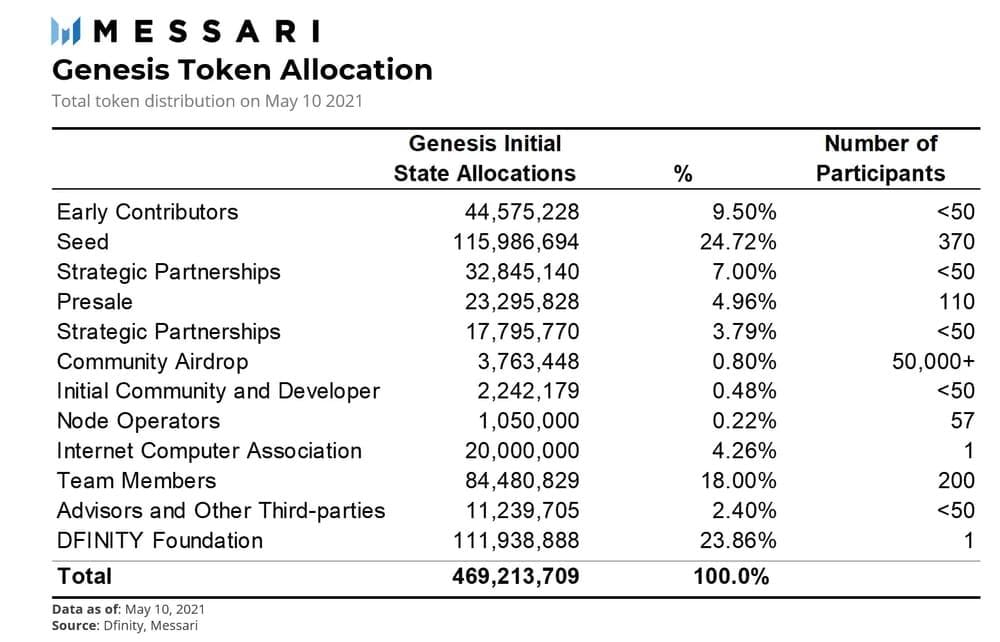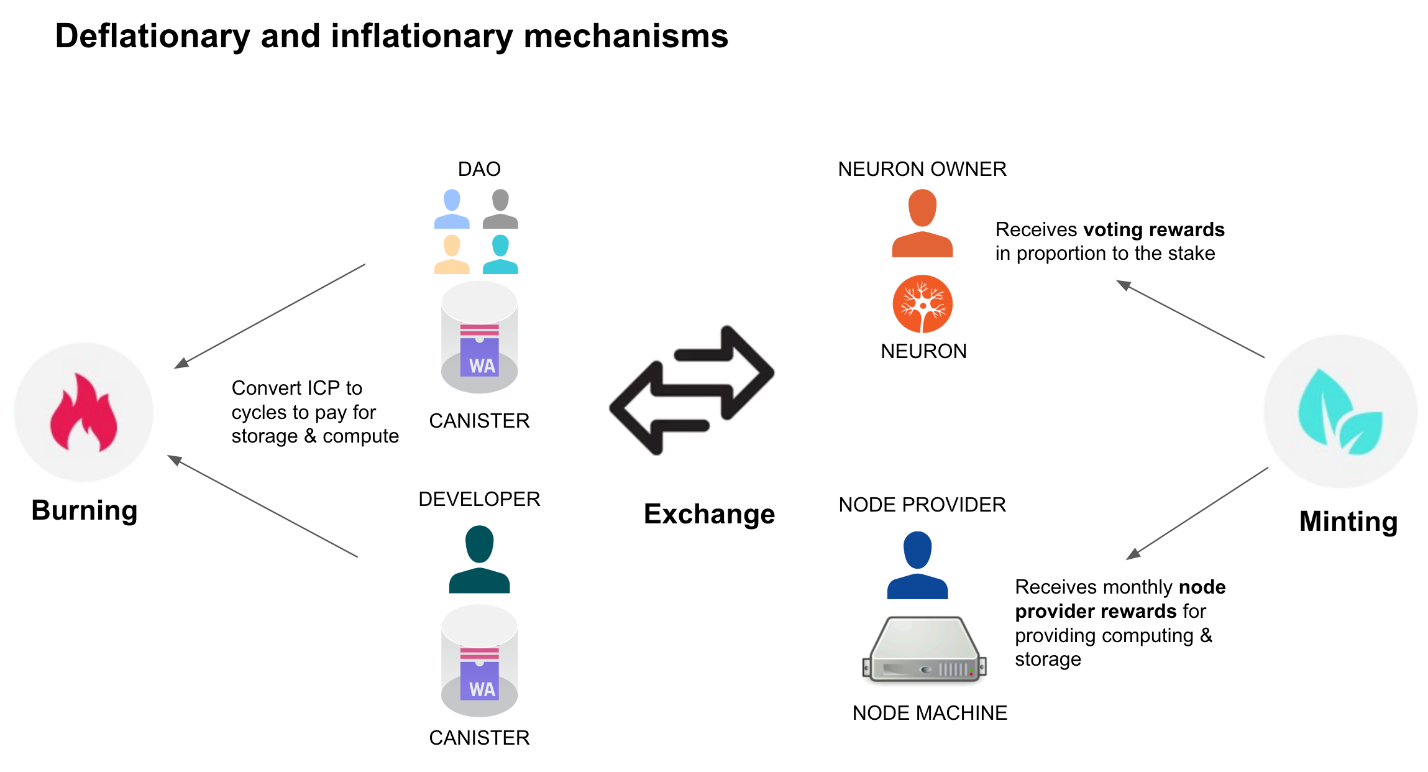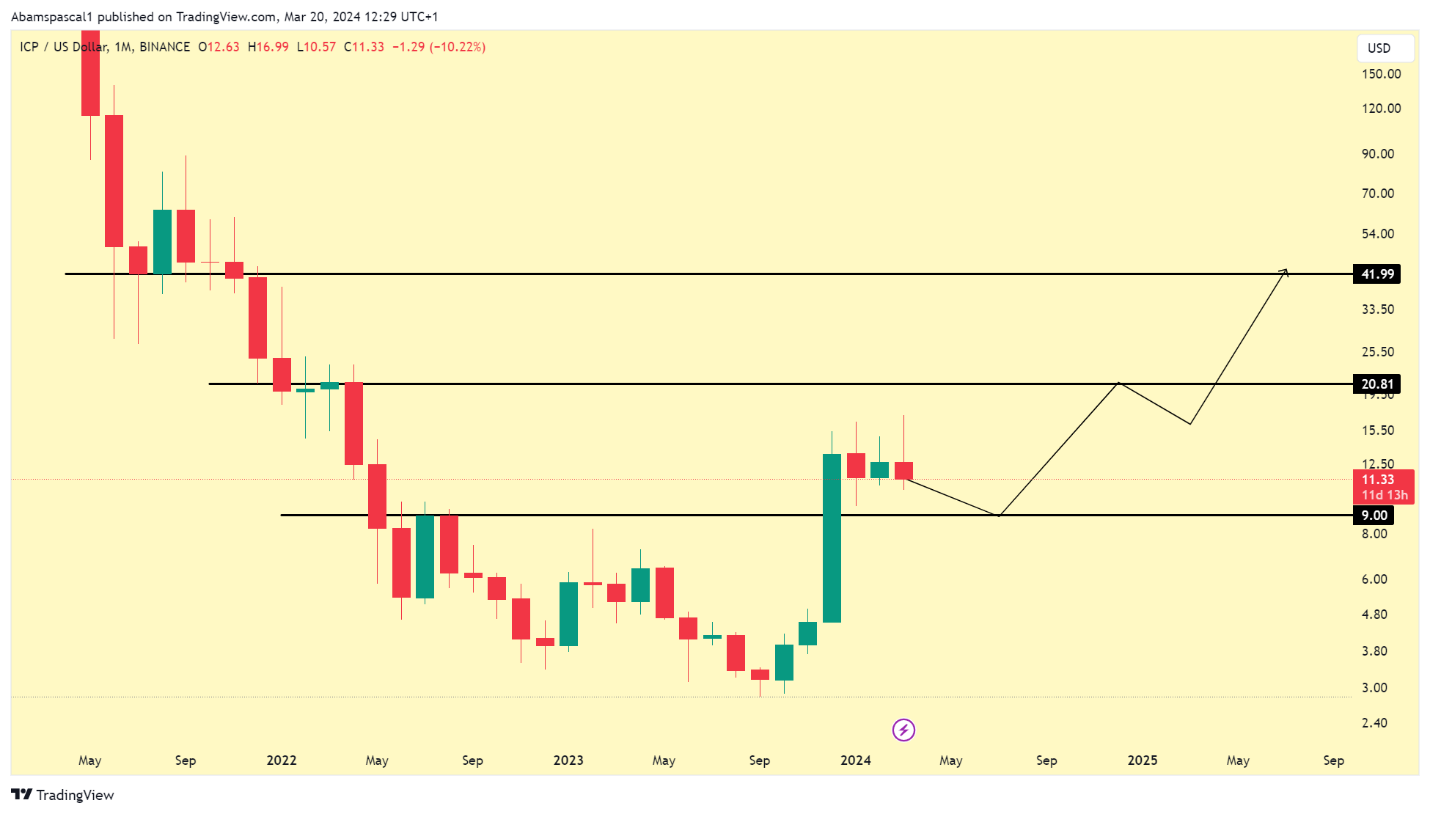ICP Token Analysis: Here's How DFINITY’s ICP is Powering the Future of the Decentralized Web
Dive deep into ICP tokenomics & its role in the Internet Computer ecosystem. Explore the network’s token distribution and utilities.

The internet, as we know it, is dominated by centralized giants. From cloud computing services to social media platforms, control resides in a few. This has led to concerns about censorship, privacy breaches, and a lack of scalability for next-generation applications.
Enter the Internet Computer Protocol (ICP), an ambitious project aiming to revolutionize the web by creating a truly decentralized alternative. ICP envisions a future where a network of independent data centers worldwide powers a scalable blockchain specifically designed for Web3 applications. This distributed infrastructure promises to overcome the limitations of traditional blockchains, paving the way for a more open, secure, and dynamic internet.
This article delves into the heart of the ICP ecosystem – the ICP token. We'll analyze its role in powering the network, explore its tokenomics, and uncover its potential as an asset within the Web3 landscape.
Tokenomics
Tokenomics plays a critical role in blockchain technology. It refers to the design and structure of a cryptocurrency's economic model, encompassing aspects like total supply, distribution, and utility within the network. Essentially, tokenomics defines how a token functions and influences its value proposition.
For the Internet Computer Protocol (ICP), a well-defined tokenomic model is crucial for fostering a sustainable and decentralized ecosystem. Let's delve deeper into the specifics of ICP's tokenomics:
- Total Supply: ICP boasts a total supply of 516.2 million tokens, with a current circulating supply of roughly 461 million. The market price of $12 translates to a market capitalization (MC) of $5.2 billion. Considering the total supply, the fully diluted valuation (FDV) stands at $5.8 billion. Interestingly, the market cap to FDV ratio sits at 0.89, indicating a market that's approaching its full potential valuation.
- Distribution: ICP's initial token distribution raised eyebrows due to its centralization. In 2017, a seed round secured $3.9 million from 370 investors, who were allocated a significant chunk of 24.7% of the total supply. Combining early contributors, seed investors, strategic partnerships, and the presale, roughly half (~50%) of ICP's supply ended up in these categories. DFINITY Foundation, team members, advisors, and the IC Association held another sizable portion – approximately 48.5%. The remaining 1.5% trickled down to node operators, airdrops, and the broader community. However, it's important to note that nearly four years have passed since then, allowing for some degree of decentralization through market activity.

- Inflation and Deflation: The Internet Computer employs a balancing act of inflationary and deflationary mechanisms. On the inflationary side, governance participants who lock up their ICP tokens (known as neurons) can earn newly minted ICP as voting rewards. Similarly, node providers, the backbone of the network, receive rewards in the form of freshly minted ICP. However, a counterbalancing deflationary mechanism exists. Whenever users leverage the network, they convert ICP tokens into cycles (the network's gas) to power their applications. This process effectively burns the ICP tokens, taking them out of circulation.

ICP's tokenomics presents a dynamic interplay between incentives for network participation and a potential deflationary effect through ICP burning. While the initial distribution raised concerns, the passage of time and ongoing network activity suggest a gradual path toward a more decentralized token distribution.
Utilities
The ICP token transcends mere speculation; it serves as the lifeblood of the Internet Computer ecosystem, powering a range of crucial functions:
- Governance and Voting Rewards: ICP empowers its holders to actively shape the network's future. By staking their tokens (creating "neurons"), they gain voting rights on proposed upgrades, network parameters, and even the allocation of funds. This participatory governance model ensures a decentralized and community-driven approach to the evolution of the Internet Computer. Furthermore, active participation through voting is rewarded with newly minted ICP tokens, incentivizing long-term engagement from token holders.
- Node Provider Rewards (Staking): The Internet Computer relies on a network of independent data centers, known as nodes, to provide the computational muscle. To incentivize these node operators and ensure the network's smooth operation, ICP offers staking rewards. Node providers who contribute their computing resources are compensated through newly minted ICP tokens. This symbiotic relationship fosters a robust and reliable network infrastructure.
- Cycles as Fuel for Conversion and Other Resources: Just like a car needs gasoline to run, applications built on the Internet Computer require cycles to function. Cycles represent the network's computational power and are acquired by converting ICP tokens. This conversion process effectively burns the ICP tokens, potentially contributing to a deflationary effect on the overall supply. Beyond computation, cycles also pay for data storage and other essential resources needed by applications running on the Internet Computer.
- Investing in the IC Ecosystem: The utility of ICP extends beyond core network functions. It serves as a gateway to participate in the burgeoning IC ecosystem. Decentralized Autonomous Organizations (DAOs) built on the Internet Computer often conduct token swaps, allowing users to invest in these innovative projects using ICP. This fosters a vibrant and interconnected Web3 environment where ICP acts as the fuel for participation and growth.
While these core utilities form the backbone of ICP's functionality, it's important to acknowledge its potential as a medium of exchange within the broader crypto landscape. ICP can be used to purchase NFTs, subscribe to services, and potentially any good or service offered within the evolving Web3 marketplace. The ICP token's versatility makes it a valuable tool for navigating the decentralized future.
Technical Analysis of ICP
Technical analysis (TA) employs various indicators and chart patterns to identify potential price movements of an asset. While TA cannot predict the future with certainty, it can provide valuable insights for investors interested in ICP.
A noteworthy development is ICP's recent surge above $9, a level that previously served as resistance for an extended period. This breakout suggests a potential shift in market sentiment, with bulls (investors who believe the price will rise) gaining momentum. There's speculation that ICP might revisit the $9 mark for a retest before continuing its upward trajectory towards $20 and potentially $42. These price points are considered significant resistance levels. Alternatively, the price may experience a consolidation phase around the current level before a sustained climb.
ICP reaching $42 would undoubtedly be a positive outcome for investors, regardless of their entry point (current price of $12 or a potential pullback to $9). However, it's crucial to remember that TA is not a foolproof method, and market conditions can change rapidly.

ICP/USD Weekly Chart
TL:DR;
The ICP token serves as the cornerstone of the Internet Computer ecosystem, playing a multifaceted role that extends far beyond mere speculation. Here's a quick recap of ICP's key takeaways:
- Governance and Decentralization: ICP empowers token holders to actively shape the network's future through participation in the governance process. This fosters a decentralized and community-driven approach to the evolution of the Internet Computer.
- Network Incentives: ICP incentivizes network participation through staking rewards for both governance participants and node operators. This symbiotic relationship ensures a robust and reliable network infrastructure.
- Fueling the Web3 Engine: ICP is the fuel for applications built on the Internet Computer. By converting ICP to cycles, developers can access the network's computational power and other essential resources.
- Gateway to the IC Ecosystem: ICP unlocks the potential for participation in the burgeoning IC ecosystem, allowing users to invest in DAOs and other innovative projects.
ICP's potential extends beyond its role within the Internet Computer. Its fungibility positions it as a potential medium of exchange within the broader Web3 marketplace. While the future remains unwritten, ICP's versatility and utility make it a compelling token to watch as the decentralized web continues to evolve.
This press release is provided by the client. The content does not necessarily reflect the views of Mariblock. Mariblock does not endorse and is not responsible for the accuracy, quality, or completeness of the information contained in this press release. Readers are encouraged to conduct their own research before taking any actions related to the company or its products.

